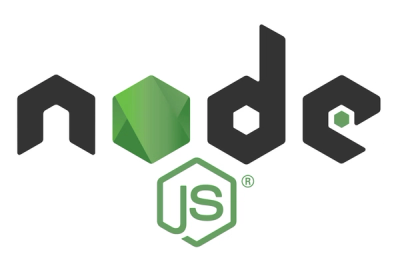
Security News
Node.js Homepage Adds Paid Support Link, Prompting Contributor Pushback
A new Node.js homepage button linking to paid support for EOL versions has sparked a heated discussion among contributors and the wider community.
org.springframework.data:spring-data-mongodb-parent
image:https://spring.io/badges/spring-data-mongodb/ga.svg[Spring Data MongoDB,link=https://spring.io/projects/spring-data-mongodb#quick-start] image:https://spring.io/badges/spring-data-mongodb/snapshot.svg[Spring Data MongoDB,link=https://spring.io/projects/spring-data-mongodb#quick-start]
= Spring Data MongoDB image:https://jenkins.spring.io/buildStatus/icon?job=spring-data-mongodb%2Fmain&subject=Build[link=https://jenkins.spring.io/view/SpringData/job/spring-data-mongodb/] image:https://img.shields.io/badge/Revved%20up%20by-Develocity-06A0CE?logo=Gradle&labelColor=02303A["Revved up by Develocity", link="https://ge.spring.io/scans?search.rootProjectNames=Spring Data MongoDB"]
The primary goal of the https://spring.io/projects/spring-data[Spring Data] project is to make it easier to build Spring-powered applications that use new data access technologies such as non-relational databases, map-reduce frameworks, and cloud based data services.
The Spring Data MongoDB project aims to provide a familiar and consistent Spring-based programming model for new datastores while retaining store-specific features and capabilities.
The Spring Data MongoDB project provides integration with the MongoDB document database.
Key functional areas of Spring Data MongoDB are a POJO centric model for interacting with a MongoDB +Document+ and easily writing a repository style data access layer.
[[code-of-conduct]] == Code of Conduct
This project is governed by the https://github.com/spring-projects/.github/blob/e3cc2ff230d8f1dca06535aa6b5a4a23815861d4/CODE_OF_CONDUCT.md[Spring Code of Conduct]. By participating, you are expected to uphold this code of conduct. Please report unacceptable behavior to spring-code-of-conduct@pivotal.io.
[[getting-started]] == Getting Started
Here is a quick teaser of an application using Spring Data Repositories in Java:
public interface PersonRepository extends CrudRepository<Person, Long> {
List findByLastname(String lastname);
List findByFirstnameLike(String firstname); }
@Service public class MyService {
private final PersonRepository repository;
public MyService(PersonRepository repository) { this.repository = repository; }
public void doWork() {
repository.deleteAll();
Person person = new Person();
person.setFirstname("Oliver");
person.setLastname("Gierke");
repository.save(person);
List<Person> lastNameResults = repository.findByLastname("Gierke");
List<Person> firstNameResults = repository.findByFirstnameLike("Oli*");
} }
@Configuration @EnableMongoRepositories class ApplicationConfig extends AbstractMongoClientConfiguration {
[[maven-configuration]] === Maven configuration
Add the Maven dependency:
If you'd rather like the latest snapshots of the upcoming major version, use our Maven snapshot repository and declare the appropriate dependency version.
[[upgrading]] == Upgrading
Instructions for how to upgrade from earlier versions of Spring Data are provided on the project https://github.com/spring-projects/spring-data-commons/wiki[wiki]. Follow the links in the https://github.com/spring-projects/spring-data-commons/wiki#release-notes[release notes section] to find the version that you want to upgrade to.
[[getting-help]] == Getting Help
Having trouble with Spring Data? We’d love to help!
new and noteworthy" features.[[reporting-issues]] == Reporting Issues
Spring Data uses Github as issue tracking system to record bugs and feature requests. If you want to raise an issue, please follow the recommendations below:
[[guides]] == Guides
The https://spring.io/[spring.io] site contains several guides that show how to use Spring Data step-by-step:
[[examples]] == Examples
[[building-from-source]] == Building from Source
You do not need to build from source to use Spring Data. Binaries are available in https://repo.spring.io[repo.spring.io] and accessible from Maven using the Maven configuration noted <<maven-configuration,above>>.
NOTE: Configuration for Gradle is similar to Maven.
The best way to get started is by creating a Spring Boot project using MongoDB on https://start.spring.io[start.spring.io]. Follow this https://start.spring.io/#type=maven-project&language=java&platformVersion=3.0.0&packaging=jar&jvmVersion=17&groupId=com.example&artifactId=demo&name=demo&description=Demo%20project%20for%20Spring%20Boot&packageName=com.example.demo&dependencies=data-mongodb[link] to build an imperative application and this https://start.spring.io/#type=maven-project&language=java&platformVersion=3.0.0&packaging=jar&jvmVersion=17&groupId=com.example&artifactId=demo&name=demo&description=Demo%20project%20for%20Spring%20Boot&packageName=com.example.demo&dependencies=data-mongodb-reactive[link] to build a reactive one.
However, if you want to try out the latest and greatest, Spring Data MongoDB can be easily built with the https://github.com/takari/maven-wrapper[Maven wrapper] and minimally, JDK 17 (https://www.oracle.com/java/technologies/downloads/[JDK downloads]).
In order to build Spring Data MongoDB, you will need to https://www.mongodb.com/try/download/community[download] and https://docs.mongodb.com/manual/installation/[install a MongoDB distribution].
Once you have installed MongoDB, you need to start a MongoDB server. It is convenient to set an environment variable to
your MongoDB installation directory (e.g. MONGODB_HOME).
To run the full test suite, a https://docs.mongodb.com/manual/tutorial/deploy-replica-set/[MongoDB Replica Set] is required.
To run the MongoDB server enter the following command from a command-line:
Once the MongoDB server starts up, you should see the message (msg), "Successfully connected to host".
Notice the --dbpath option to the mongod command. You can set this to anything you like, but in this case, we set
the absolute path to a sub-directory (runtime/data/) under the MongoDB installation directory (in $MONGODB_HOME).
You need to initialize the MongoDB replica set only once on the first time the MongoDB server is started. To initialize the replica set, start a mongo client:
Then enter the following command:
Finally, on UNIX-based system (for example, Linux or Mac OS X) you may need to adjust the ulimit.
In case you need to, you can adjust the ulimit with the following command (32768 is just a recommendation):
You can use ulimit -a again to verify the ulimit for "open files" was set appropriately.
Now you are ready to build Spring Data MongoDB. Simply enter the following mvnw (Maven Wrapper) command:
If you want to build with the regular mvn command, you will need https://maven.apache.org/run-maven/index.html[Maven v3.8.0 or above].
Also see link:CONTRIBUTING.adoc[CONTRIBUTING.adoc] if you wish to submit pull requests, and in particular, please sign the https://cla.pivotal.io/sign/spring[Contributor’s Agreement] before your first non-trivial change.
=== Building reference documentation
Building the documentation builds also the project without running tests.
The generated documentation is available from target/antora/site/index.html.
[[license]] == License
Spring Data MongoDB is Open Source software released under the https://www.apache.org/licenses/LICENSE-2.0.html[Apache 2.0 license].
FAQs
MongoDB support for Spring Data
We found that org.springframework.data:spring-data-mongodb-parent demonstrated a healthy version release cadence and project activity because the last version was released less than a year ago. It has 0 open source maintainers collaborating on the project.
Did you know?

Socket for GitHub automatically highlights issues in each pull request and monitors the health of all your open source dependencies. Discover the contents of your packages and block harmful activity before you install or update your dependencies.

Security News
A new Node.js homepage button linking to paid support for EOL versions has sparked a heated discussion among contributors and the wider community.

Research
North Korean threat actors linked to the Contagious Interview campaign return with 35 new malicious npm packages using a stealthy multi-stage malware loader.

Research
Security News
The Socket Research Team investigates a malicious Python typosquat of a popular password library that forces Windows shutdowns when input is incorrect.